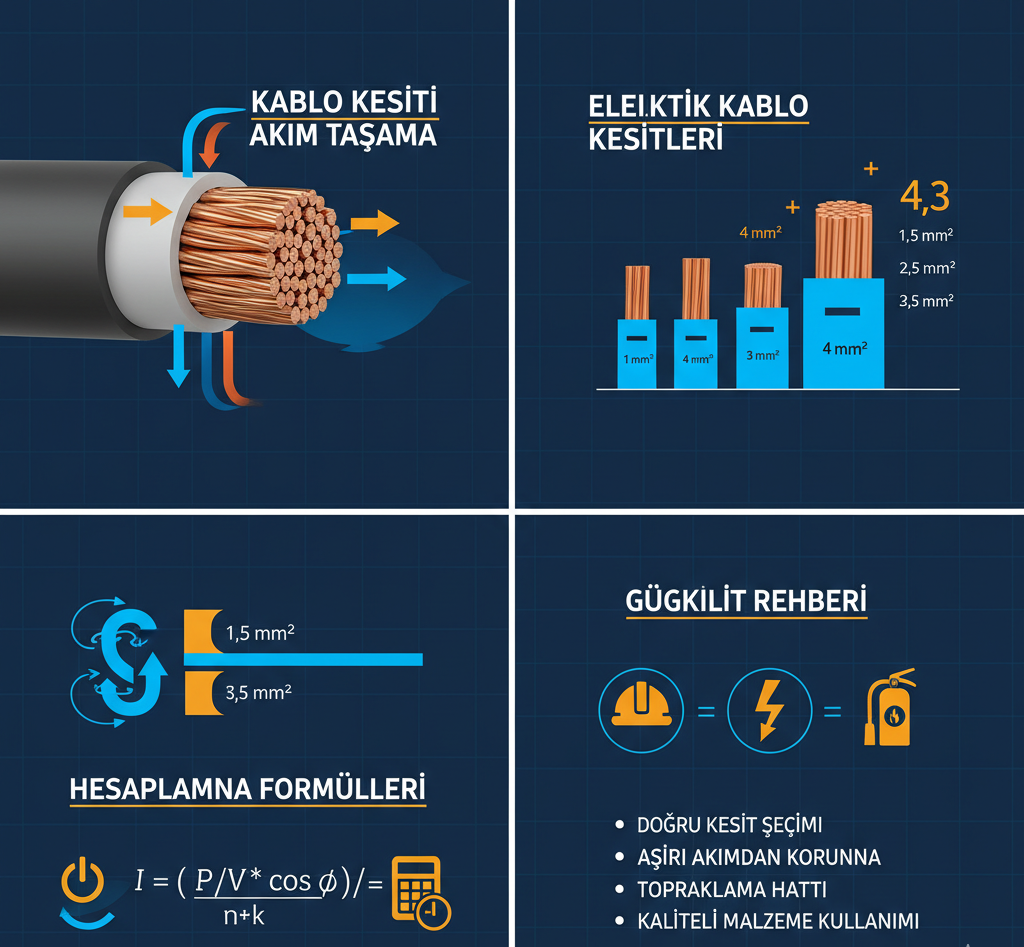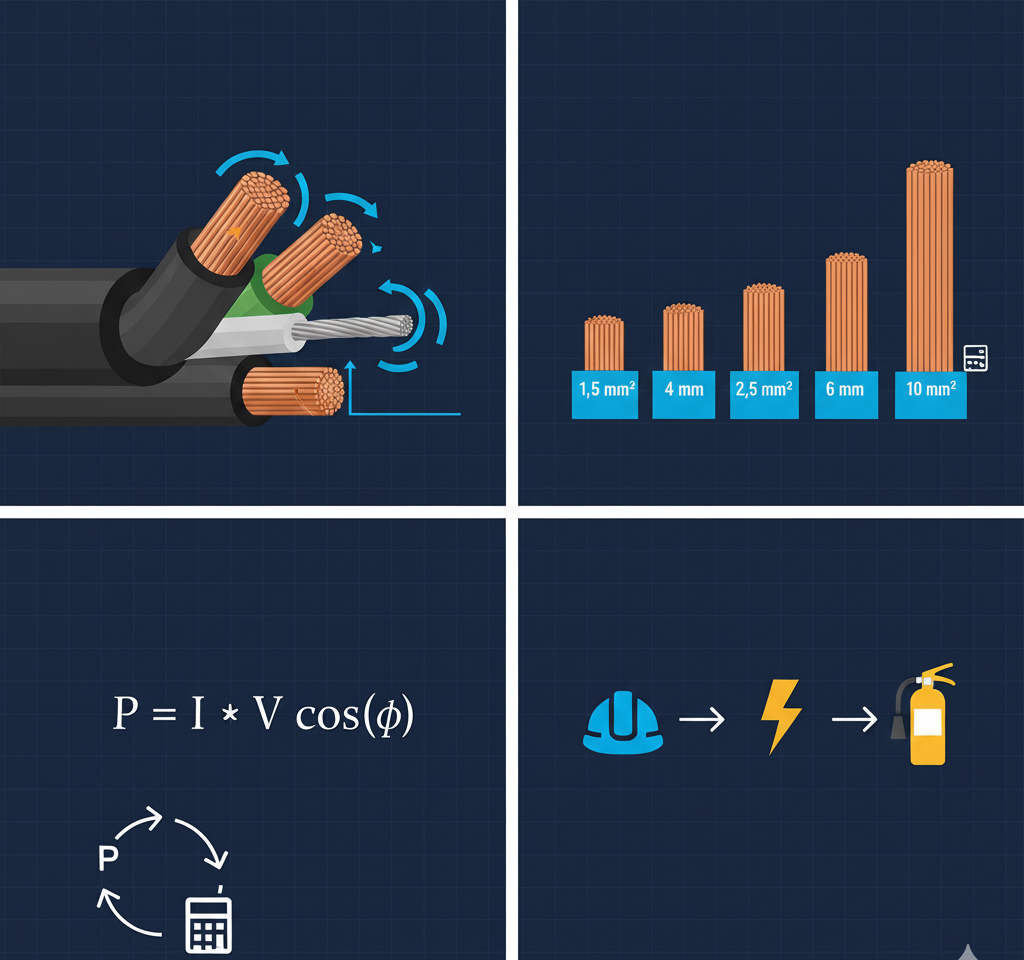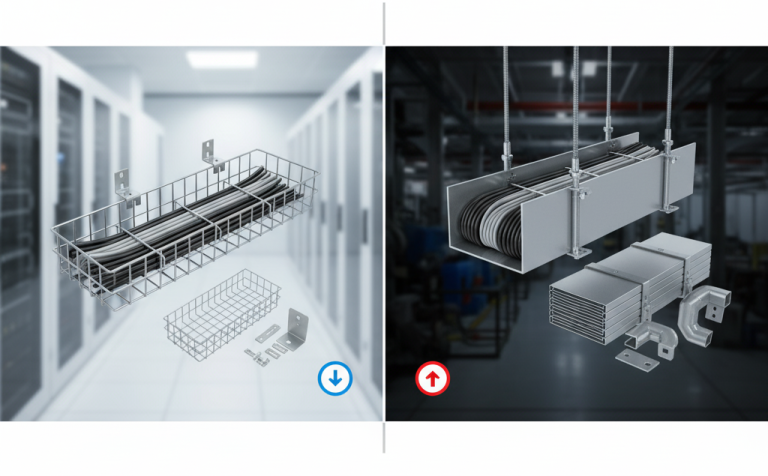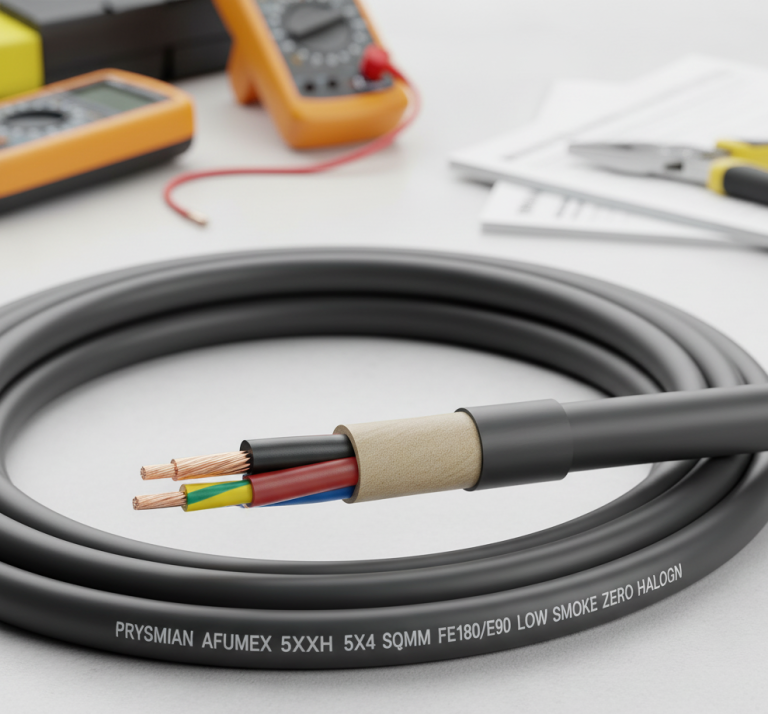The question, What is Cable Cross-Section and Current Carrying Capacity?, is fundamental to determining the safety and efficiency of an electrical installation. This measurement, also known as cable thicknesses, directly determines the electric current a cable can safely carry, which is its current carrying capacity. Incorrect calculation of electrical cable current carrying capacities leads to cable heating calculation errors, energy loss, and, most importantly, fire risk. Therefore, finding the answer to what is conductor cross-section preserves the long-term investment value of your project.
In this comprehensive guide, we will examine What is Cable Cross-Section and Current Carrying Capacity, how to perform the current carrying capacity calculation, the factors affecting electrical cable sections and electrical cable current carrying capacities, and Prysmian solutions.
What is Cable Cross-Section and Current Carrying Capacity?
Cable cross-section refers to the area of the conductor (copper or aluminum) inside the cable in square millimeters (mm²). The cable current carrying capacity is the amount of current (in Amperes/A) that this cross-section can continuously carry without exceeding the maximum allowable temperature of the insulation.
- Fundamental Safety Rule: There is a direct relationship between cable cross-sections and the currents they carry. The larger the answer to what is conductor cross-section, the lower the resistance, and the higher the current the cable can carry.

Cable Heating Calculation and Voltage Drop
The cable heating calculation checks whether the cable safely dissipates the heat generated by its resistance to the environment. When performing the current carrying capacity calculation, not only are the heating limits of the cable checked, but also whether the voltage drop remains within acceptable limits at the end of the line. Loss of efficiency is prevented by selecting the correct electrical cable sections for long lines.
Critical Factors Affecting Current Carrying Capacity
Electrical cable current carrying capacities do not depend solely on electrical cable thicknesses. Guides like the international standard IEC 60287 include correction factors that take thermal conditions into account:
- Insulation Material: XLPE insulation (90°C) is more resistant to high temperatures than PVC (70°C), allowing XLPE cables to carry more current for the same cross-section.
- Ambient Temperature: As the temperature increases, the cable’s ability to dissipate heat decreases, and the cable current carrying capacity drops.
- Laying Method and Grouping: Laying cables side-by-side or stacked (grouping) causes their heat to affect each other. The grouping factor significantly reduces the cable current carrying capacity calculation.
- Soil Thermal Resistivity: For underground cables, the type and depth of the soil (sandy, moist) determine the cooling efficiency of the cable.
Correct Cable Selection and Practical Applications
A table of cable cross-sections and the currents they carry can be used to determine the correct cable cross-section, but the final calculation must be made with thermal factors.
- Hidden Danger: Tools like the under-plaster electric cable detector locate cables in existing installations. However, this is only for location; a correct cable current carrying calculation must be performed to understand if the existing cable cross-section is inadequate. Otherwise, you may be carrying an invisible overload risk in your installation.
Deltatema Solution: Safety and Expertise
At Deltatema, we offer expert consulting on the correct electrical cable sections and current carrying capacity calculation required for your projects. We secure your long-term investment with XLPE-based products from leading brands like Prysmian.
- Prysmian Support: Prysmian offers great facilities to engineers in calculating cable cross-sections and the currents they carry through its user-friendly mobile applications (like CableApp). You can review Prysmian’s technical article on this subject.
To correctly determine cable cross-sections and current carrying capacities, you can check Deltatema’s product portfolio.
Conclusion
Cable Cross-Section and Current Carrying Capacity are fundamental to the reliability of your electrical systems. Performing the correct current carrying capacity calculation is not only a legal obligation but also the sign of the right choice for electrical projects. At Deltatema, we are proud to meet all your project’s energy transmission needs in the most efficient and safest way.












